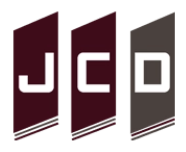SST001
-
Site conducted
-
Conducted on
-
Prepared by
-
Location
Introduction
-
Accident investigations provide a deeper understanding of the risks associated with work activities, and enable the development and refining of the company's risk management system in order to prevent further such incidents.
-
The level at which investigations are carried out is determined by the incident's potential consequences and likelihood of it recurring.
Investigation Reports
-
Should be conducted internally as soon as possible after the event regardless of any third-party investigation.
-
Are only to include the facts as identified by the investigating employee. It is not for speculation or opinion, which can be discussed at the Incident closeout meeting.
-
Simply, if you cannot touch it, hear it, smell it, see it, or taste it, it is not a fact.
-
Are to be carried out by the QSHE manager. While the QSHE Manager can delegate the investigation task, they remain responsible for the investigation.
-
Only use the Group Template for investigations. No other documentation is to be used and electronic communications (email) should be avoided as they are discoverable.
-
Introduction
-
Investigation Reports
-
Should investigation reports be conducted internally as soon as possible after the event regardless of any third-party investigation?
-
What are investigation reports only supposed to include?
-
Who is responsible for carrying out investigation reports?
-
Can the QSHE Manager delegate the investigation task to others?
-
Revision 1 - June 2020
-
Checklists and Documentation Required for Health & Safety Investigation:
-
Permits to work
-
Risk assessments
-
Method statements
-
Self-audits
-
Site Visits
-
QSHE audits
-
Health & safety plans
-
Machinery maintenance certification
-
Training records
-
Minutes of Site Meetings highlighting health & safety as an item on the Agenda
-
Photographs
-
Maps
-
Contracts and Subcontract Works Order
-
Any expert evidence required as instructed by the QSHE Director
-
Produce a 'time-line' detailing events surrounding the incident, both prior to & after.
-
Identify immediate (primary causes) of the incident-determine whether or not there were any shortcomings in the QSHE management system/ management failure which arose because of:
-
Incorrect risk management
-
System/ procedure implementation problems
-
Monitoring failures
-
Inadequate reviews
-
A failure to manage change effectively; and/or
-
A failure of control measures
-
Underlying (root) causes of the incident
-
Unsafe acts & conditions that are relevant to & may have influenced the incident
-
When completed, the investigating person must sign & date the report.
-
Protecting the Internal Investigation:
-
Privilege is the right that a party to the actual/ contemplated litigation has to withhold those documents that are privileged from other parties to the litigation. Privileged documents include:
-
Correspondence between the client and its lawyers when written for the purposes of giving/ obtaining legal advice
-
Correspondence between the QSHE Manager and the Company Director where it relates to legal matters
-
Expert reports & witness statements prepared in connection with litigation
-
All other documents that have been created for the purpose/ dominant purpose of litigation
-
Investigation reports are usually subjective & highly self-critical. Such reports frequently find their way into the hands of the investigating, prosecuting authority & hence end up being used as a basis of a prosecution/ as evidence in a prosecution. There will be occasions when we do not object to this occurring, but it would be good to have the choice. The choice is often lost because the investigation is conducted & the report is prepared otherwise than for the purposes of litigation & therefore privilege does not attach to it.
-
A recent Court ruling means that legal advice privilege has narrowed in scope. Greater care must be paid to which persons within a company are producing preparatory material such as internal memoranda & working papers, with a view to briefing those internal personnel seeking legal advice. It should be borne in mind that in the absence of
-
LIR Guidance
-
Enter the name of Sector/Subsidiary
-
Contract Number
-
Site Manager
-
Designated Lead Investigator
-
Project Manager - enter name not position
-
Competent Person (DCP)
-
Type of Incident (Property damage / type of injury etc.)
-
HSEQ Practitioner name if delegated to Project Manager and QSHE Manager
-
Date of Incident
-
Time of Incident
-
Incident Reference
-
Legal Status (Either RIDDOR reportable or not reportable)
-
Completion Date for the Investigation (4 weeks from the date of the incident)
-
RIDDOR Reference Number
-
An Interim Report, Incident I.C.1-I.C.9 As Appropriate
-
Classification (As defined in BSP/SMA/006.2-1.2)
-
Investigation Objective
-
Archiving (This investigation shall be kept for a minimum of 10 (ten) years, in accordance with QSHE Procedures)








